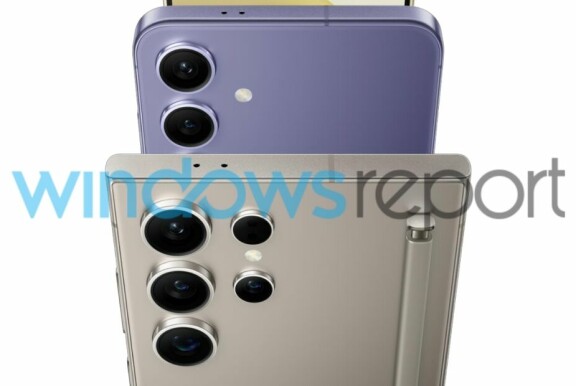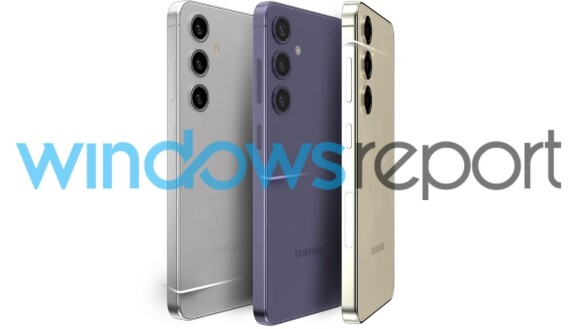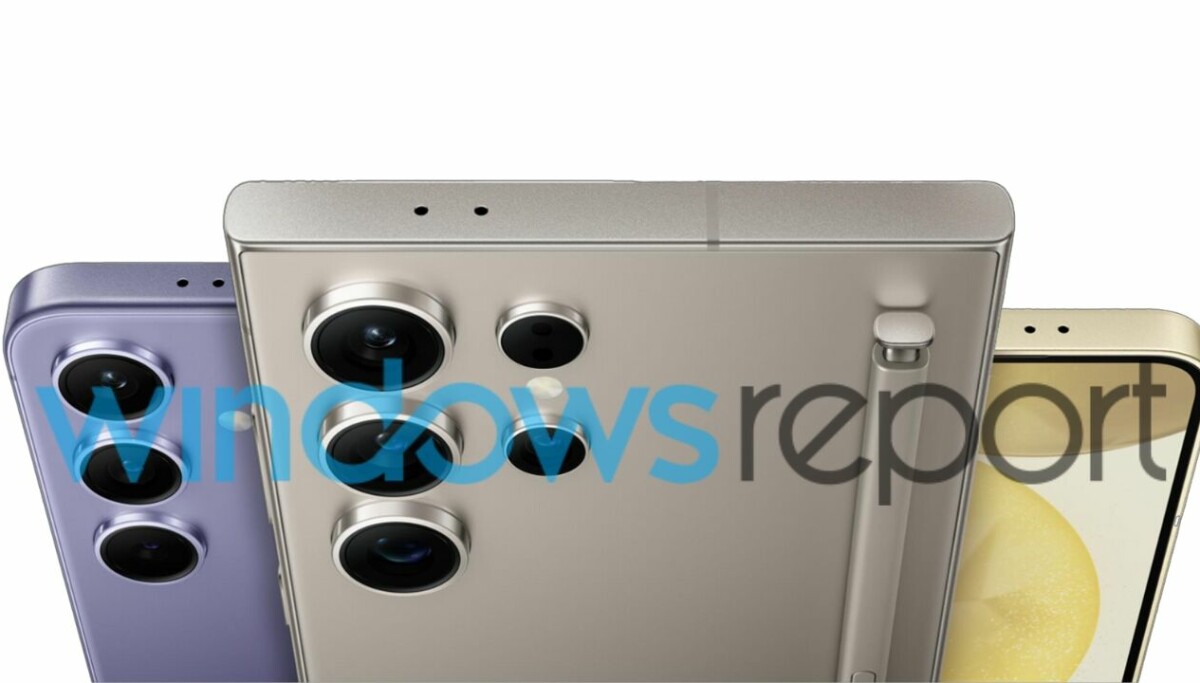Cameras and battery
A major Galaxy S24 leak brings us new images and detailed information about the memory, cameras and battery of the three models in the Galaxy S24 series.
that it Windows Report This explains the new leak that includes both images and detailed information about the Samsung Galaxy S24, S24 Plus, and S24 Ultra phones. Images of what appear to be official CAD renders leaked in September confirm that the models have almost the same back as the S23 series, but the edges have become less rounded so the S24 and S24 Plus in particular are very similar to the iPhone 15 series. The biggest change in shape is that Samsung has finally pulled back on its investment in curved displays, because even the Galaxy S24 Ultra now has a completely flat screen, and not a slightly curved one like on the S23 Ultra.
According to the leak, the Galaxy S24 Ultra will come in four colors: Titanium Black, Titanium Grey, Titanium Violet, and Titanium Yellow. Which is an inaccurate way of saying that the Ultra model has a titanium frame. The other two models are expected to feature the so-called Armor Aluminium, and come in almost the same colors, but without the titanium in the name. They are then called Onyx Black, Marble Grey, Cobalt Violet, and Amber Yellow instead.
The screen in the S24 Ultra is expected to be as large as its predecessor, while the other two models will have slightly larger screens. The same goes for the batteries, as the Ultra model remains at 5,000 mAh, while the S24 will get 4,000 mAh and the Plus 4,900 mAh. It is unclear whether this means that the phones themselves will also become larger, as the leaked information does not contain the dimensions of the phones. However, the S24 Plus was supposed to have its screen resolution increased to QHD+. The refresh rate is still 120Hz.

In terms of performance, it’s said here that the S24 Plus and Ultra will get the Snapdragon 8 gen 3, while the S24 gets the equivalent of Samsung’s Exynos 2400. This may certainly vary from region to region and the only conclusion we can draw is that the S24 series looks to come with Qualcomm and Samsung chipsets.

However, all three models will reportedly get so-called larger vapor chambers, i.e. liquid-powered cooling. The cooling section is said to be 1.5 times larger than before in the S24, 1.6 times in the S24 Plus, and 1.9 times in the S24 Ultra compared to its predecessors in the S23 series. Cooling is an important factor for performance over time.
One of Samsung’s main selling points for the new models and what the increased performance will be used for is said to be artificial intelligence, and it has registered AI Phone and AI Smartphone as trademarks. AI will be used, among other things, to translate messaging apps in real time between more than a dozen different languages and to enhance camera images using generative AI, which will learn over time. Additionally, you should be able to search for objects in photos by simply tagging them.

The camera setup on the Galaxy S24 and S24 Plus appears to be the same as it was in the past two years, i.e. a 50-megapixel main camera, a 12-megapixel wide-angle camera, and a 10-megapixel 3x zoom camera. The Samsung Galaxy S24 Ultra is expected to contain a 200-megapixel main camera, a 12-megapixel wide-angle camera, and two telephoto cameras, one with a 3x 10-megapixel resolution and the other with a 50-megapixel resolution with 5x zoom. The 10-megapixel periscope camera with 10x zoom in the S23 Ultra is thus replaced by a more precise camera with a lower degree of zoom. The image result may be as good or better even at higher magnification thanks to the higher resolution.
The Samsung Galaxy S24 series is expected to launch on January 17.

“Entrepreneur. Freelance introvert. Creator. Passionate reader. Certified beer ninja. Food nerd.”







More Stories
Logitech Steering Wheel News: New Steering Wheels, Gear Lever, and Handbrake in Direct Drive Series
Garmin Launches inReach Messenger Plus App
Why Rare Earth Metals for Electric Cars Are Crucial for Modern Mobility